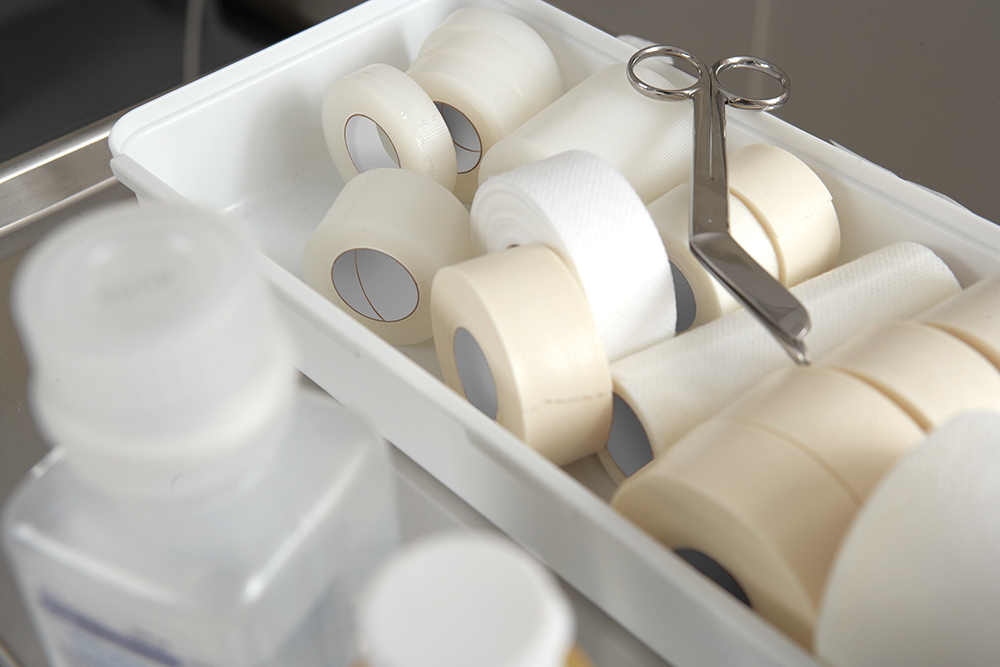
Stocked in every supply room and brought to nearly every patient room, tape is one of the most widely-used medical technologies. There are few medical items that touch patients as frequently as tape does; in fact, 69% of clinicians use medical tape multiple times per day.1 Further, there is not another medical device in the care setting asked to do such a vast myriad of jobs that is required of tape. It holds breathing tubes in place, secures IV lines, manages post-operative drains, ports and other devices, and it comes into direct contact with patient skin. However, is tape contamination something you’ve ever stopped to think about? To the eye, tapes probably look clean, but are they invisibly dirty?
The dirty truth about medical tapes.
![]() Researchers have been looking at medical tapes and the risk for cross-contamination dating back to the 1970s – yet it continues to be an area of concern for patient safety today with very few guidelines or recommendations on how to combat the concern or decrease the risk. Here are just a couple telling pieces of evidence:
Researchers have been looking at medical tapes and the risk for cross-contamination dating back to the 1970s – yet it continues to be an area of concern for patient safety today with very few guidelines or recommendations on how to combat the concern or decrease the risk. Here are just a couple telling pieces of evidence:
- A study sampled 24 bedside tape rolls at 1, 5 and 7 days in a 16-bed ICU at a 560-bed teaching hospital. 100% of the tape rolls sampled were contaminated.2
- In one observation, 11 out of 21 tape samples used for multiple patients contained methicillin-resistant Staphylococcus aureus (MRSA) and/or vancomycin-resistant enterococci (VRE).3
Why are tapes potential sources of contamination?
 As noted above, despite tape cross-contamination being identified as a concern back in the 1970s, there are minimal guidelines and recommendations available to guide clinicians to take a cleaner approach to handling and using tape. A survey by the American Journal of Infection Control showed that4:
As noted above, despite tape cross-contamination being identified as a concern back in the 1970s, there are minimal guidelines and recommendations available to guide clinicians to take a cleaner approach to handling and using tape. A survey by the American Journal of Infection Control showed that4:
- Multiple facilities had no existing policies or standards of care relating to tape storage and use.
- Tape was stored in open bins in clean supply rooms which were not regularly cleaned.
- 5% of staff members carried rolls of tape in pockets or on stethoscopes.
- Only 61.5% of staff discarded unused tape when a patient was discharged.
Hidden in plain sight.
In everything we do for our patients, we take safety into consideration. Despite it not being as widely talked about as other safety concerns, the role tape can play in the risk for cross-contamination in the care setting is real. Luckily for clinicians and patients, help for this problem is on the way. Watch a video to learn how you can help reduce the risk of cross-contamination with individually packaged single-patient-use rolls*.
*Individually packaged, single-patient-use rolls help prevent tape from being exposed to environmental contaminants, minimize contact with hospital surfaces and equipment, and minimize exposure to healthcare worker hands.
1 3M 2018 Medical Tape Market Research. On file at 3M. 70-2011-7170-2.
2 Berkowitz DM, Lee WS, Pazin GJ, Yee RB, Ho M. Adhesive Tape: Potential Source of Nosocomial Bacteria. Appl Microbiol. 1974;28(4):651-4.
3 Harris PN, Ashhurst-Smith C. Berenger SJ, Shoobert A, Ferguson JK. Adhesive tape in the health care setting: another high-risk fomite? Med J Aust. 2012;196(1):34.
4 McClusky J, Davis M, Dahl K. A gap in patient tape storage and use practices puts patients at risk for cutaneous fungal infections. Am J Infect Control. 2015;43(2):182-4.
Like what you’ve read?
Consider subscribing to Transforming Outcomes to learn more about insights on skin, complications prevention and patient care.
